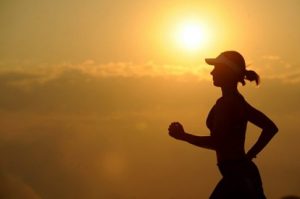Now that the weather is beginning to heat up, the stressors put on the body when training changes. This, in combination with a lot of athletes switching to a summer sport, means that the demands on training are very different. Training in warmer temperatures has a significant effect on how the body can tolerate the heat and how it responds to other temperature-based stimuli. This is process is called climatization.
Acclimatisation is an athletic training system whereby the body is forced to compensate for the stresses of a new training condition (temperature). Acclimatisation can take several weeks and is needed for athletes to maintain the new adaptations for a period longer than 2 weeks. Think of athletes going to the 2016 Olympics in Rio, it was extremely hot and humid, even for a Summer Olympics. The athletes going to the games needed to prepare their bodies for this heat so that they could still perform at their best.
Acclimatisation can also refer to altitude training. Exposing athletes to altitude, or training in reduced oxygen levels can allow athletes to improve cardiovascular performance. Prolonged exposure to training reduced oxygen levels can stimulate increases in the hormone erythropoietin, which is responsible for production of Red Blood Cells, allowing for greater oxygen delivery to muscles. Thus, when athletes return to normal oxygen levels, oxygen delivery for muscles is greatly improved.
During the heat acclimatisation process athlete’s whole-body temperature generally increases beyond normal, and perspiration rate is drastically elevated. As heat training continues, you’ll find body temperature slowly decreases, and perspiration rate reduces, as the body becomes used to the heat. Due to this increase in perspiration rate, it is important to recover water losses by rehydrating with water and electrolytes. It has been found that 2x 90min sessions targeting aerobic fitness per week, in elevated temperatures, has been found to stimulate the acclimation process in approximately in 2 weeks.
Remember this as something to consider as you begin training in warmer weather. Be sure to remain hydrated and adequately recover water losses.




